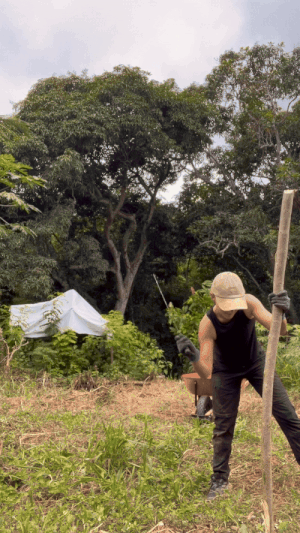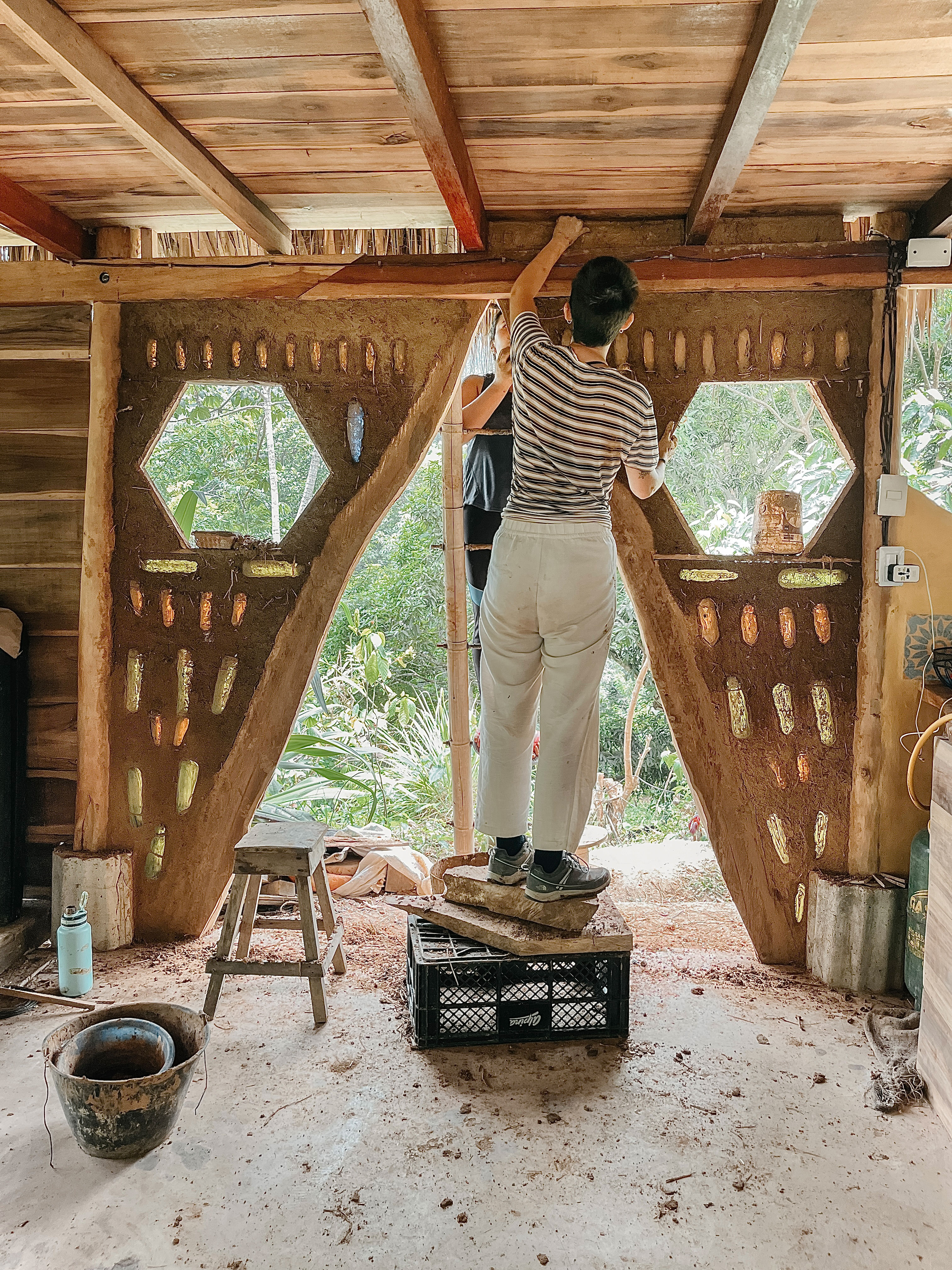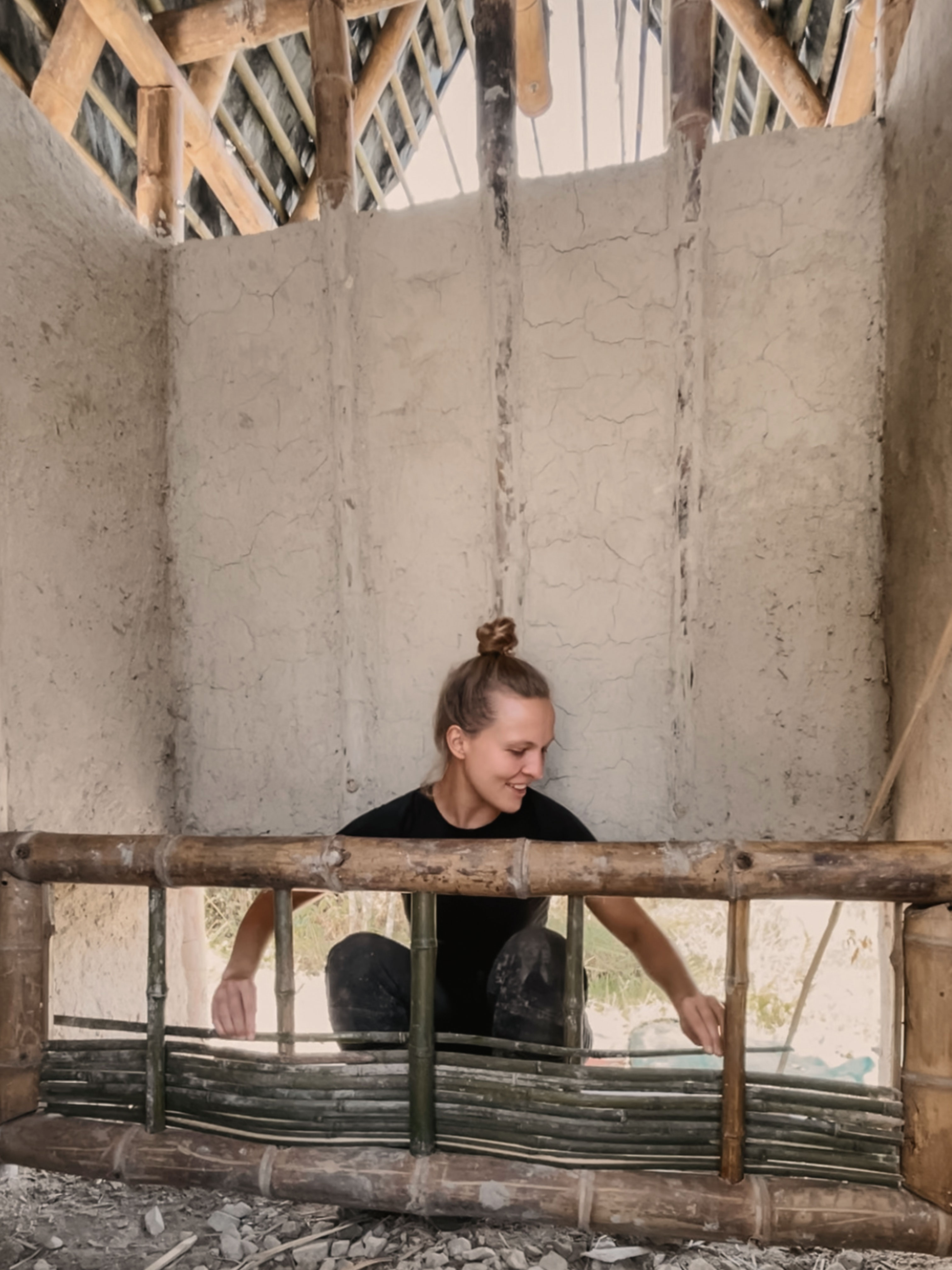COLOMBIA
Permaculture &
Bioconstruction
in Latin America
︎︎︎ sustainable farming
︎︎︎ agroforestry
︎︎︎ microorganisms
︎︎︎ composting
︎︎︎ fertilizer
︎︎︎ water storage
︎︎︎ irrigation systems
︎︎︎ bamboo construction
︎︎︎ earthern plaster
Bioconstruction
in Latin America
︎︎︎ sustainable farming
︎︎︎ agroforestry
︎︎︎ microorganisms
︎︎︎ composting
︎︎︎ fertilizer
︎︎︎ water storage
︎︎︎ irrigation systems
︎︎︎ bamboo construction
︎︎︎ earthern plaster
Throughout my career, I have always been deeply interested in socially impactful design and exploring ways in which we as designers can contribute to addressing challenges like climate change or sustainable food production. Spending over a year in Latin America, I explored permaculture and bioconstruction and learned hands-on techniques to design agricultural systems in harmony with nature.
Permaculture is a design system for creating sustainable and self-sufficient human habitats by mimicking the patterns and relationships found in nature. It integrates land, resources, people, and the environment through principles that promote harmony, resilience, and regeneration.
Bioconstruction is a sustainable approach to construction that uses natural, locally available, and often recycled materials to create buildings that are environmentally friendly, energy-efficient, and well-integrated with the local ecosystem.
Permaculture is a design system for creating sustainable and self-sufficient human habitats by mimicking the patterns and relationships found in nature. It integrates land, resources, people, and the environment through principles that promote harmony, resilience, and regeneration.
Bioconstruction is a sustainable approach to construction that uses natural, locally available, and often recycled materials to create buildings that are environmentally friendly, energy-efficient, and well-integrated with the local ecosystem.

Permaculture is based on observing nature and designing systems that work with, rather than against, natural processes. It encourages using resources wisely by capturing energy, recycling waste, and valuing renewable materials. Diversity, integration, and small, gradual solutions are key to creating resilient and productive environments. The approach emphasizes thoughtful design, where every element supports others, creating efficient and regenerative systems. At its core, permaculture aims to meet human needs while restoring and enriching the ecosystems we depend on.
The permaculture design process involves observing the land, analyzing its features, identifying needs and goals, creating a site plan, implementing in phases, and adjusting based on feedback to build a sustainable, regenerative system. In this case, feedback refers to the real-world results and responses from the system you're working with—both natural and human—and it guides the adjustments made over time.
My experience with permaculture taught me to observe systems closely, identify needs, and iterate based on real-world feedback—an approach that translates directly into interaction design. Just like in nature, good design responds to its environment and evolves over time. The feedback loop—observe, act, evaluate, adjust—is key to building resilient, user-centered systems. This mindset helps me create solutions that are not only functional, but adaptable and sustainable.
The permaculture design process involves observing the land, analyzing its features, identifying needs and goals, creating a site plan, implementing in phases, and adjusting based on feedback to build a sustainable, regenerative system. In this case, feedback refers to the real-world results and responses from the system you're working with—both natural and human—and it guides the adjustments made over time.
My experience with permaculture taught me to observe systems closely, identify needs, and iterate based on real-world feedback—an approach that translates directly into interaction design. Just like in nature, good design responds to its environment and evolves over time. The feedback loop—observe, act, evaluate, adjust—is key to building resilient, user-centered systems. This mindset helps me create solutions that are not only functional, but adaptable and sustainable.

Mulching fields, mixing clay and witnessing the
rewards of the harvest come to life.
rewards of the harvest come to life.
Healthy, fertile soil is the foundation of productive agriculture. Permaculture emphasizes composting, mulching, and minimizing soil disturbance, which leads to better water retention, nutrient cycling, and long-term soil fertility. It also encourages planting diverse species—plants, trees, and animals—that all work together, supporting a balanced ecosystem. This helps control pests naturally, supports pollinators, and prevents disease spread.
Permaculture systems also are designed to be resilient to climate change and natural disasters. By growing diverse crops and creating closed-loop systems, where waste becomes a resource, people become less dependent on external inputs, increasing self-sufficiency.




Immersing myself fully in bioconstruction –
from clay to bamboo, crafting with nature’s materials!
from clay to bamboo, crafting with nature’s materials!
Bioconstruction makes use of local materials with minimal environmental impact, such as clay, bamboo, and recycled resources. This significantly reduces the reliance on imported building materials, which often come with high carbon footprints. For example, adobe homes are built from natural materials like clay, sand, straw, and water—resources that are usually abundant and locally available. This not only cuts down on the need for manufactured materials but also lowers the carbon footprint tied to production and transportation. When properly cared for, adobe homes can last for decades and are well-suited to withstand environmental conditions and natural wear.
Furthermore, Adobe construction doesn't require advanced technology, making it a perfect choice for areas where modern building methods or resources may be scarce. These homes provide comfortable, durable living spaces that help conserve energy, protect the environment, and preserve cultural heritage.